I think I know at least 6 different ways of shaping bâtards. I often choose how I shape them on impulse. This weekend, I decided to be a bit more reflective and consciously chose 3 variations to try. I think I gained better control over bâtard shaping as a result.
I made two loaves of Hamelman's Pain au Levain from “Bread” and two loaves of my San Joaquin Sourdough.
The first loaf was shaped using one of the methods learned from the San Francisco Baking Institute. I can't recall seeing this method demonstrated elsewhere.
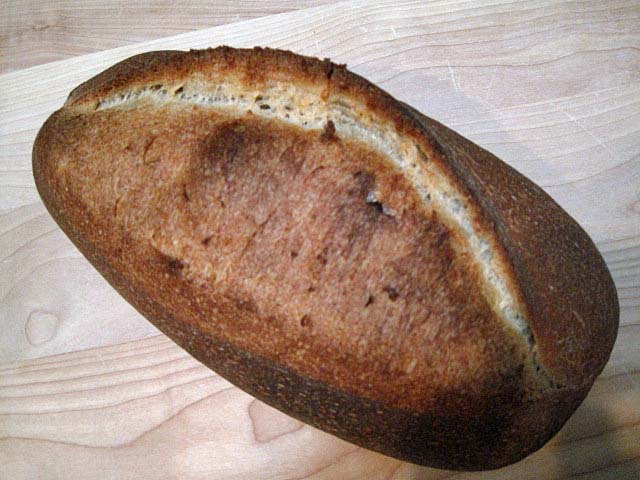
Pain au Levain from Hamelman's "Bread," shaped using Method 1.
Method 1
Pre-shape as a log. Rest 20 minutes, seam side up, covered.
Place the piece on the board with one short side closest to you. De-gas.
Take the far edge and fold it towards you about 1/3 of the length of the piece. Seal the seams.
Fold the left side 1/3 of the way towards the middle and seal the seams. Repeat for the right side.
Starting with the far end, roll the piece towards you, sealing the seam with the edge or heel of your hand at each turn. Seal the final seam well.
Turn the loaf seam side down and roll it to even out the shape and achieve the desired length.
This method is suitable to make a bâtard with a fat middle and little tapering, as pictured.
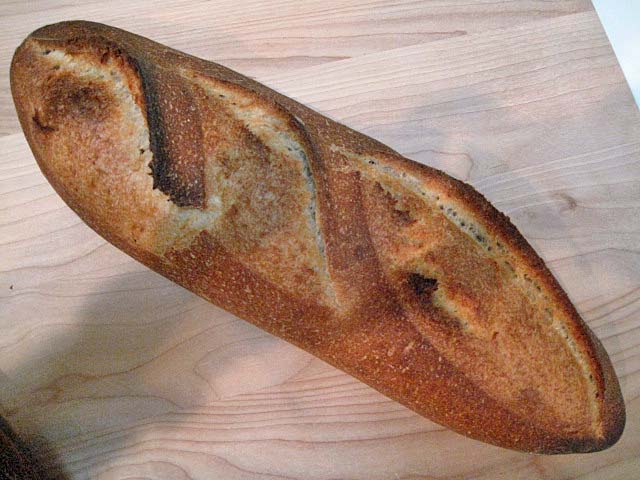
Pain au Levain from Hamelman's "Bread," shaped using Method 2.
Method 2
Pre-shape as a log. Rest 20 minutes, seam side up, covered.
Place the piece on the board with a wide side closest to you. De-gas.
Fold the far side to the middle. Seal the seam.
Rotate the piece 180º.
Fold the far side 2/3 of the way towards you. Seal the seam.
Grasp the far edge and bring it all the way over the piece, to the board and seal the seam. (Essentially, this is the method traditionally used to shape baguettes.)
Turn the loaf seam side down and roll it to even out the shape and achieve the desired length.
This method makes a longer, thinner loaf with more tapered ends.
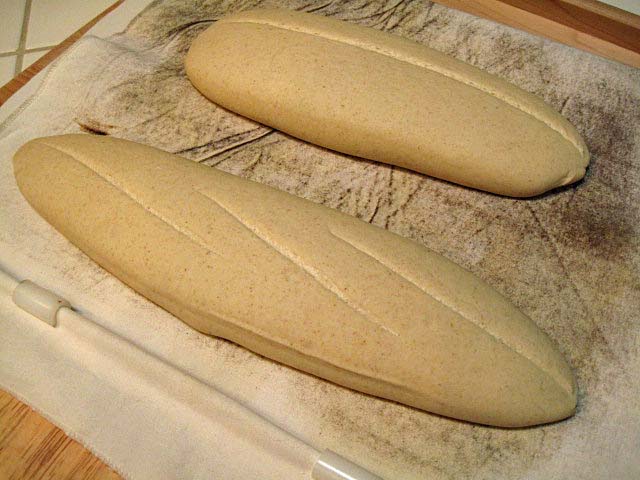
The two loaves of Pain au Levain after shaping and scoring - ready to bake. Note that these loaves were of identical weight.
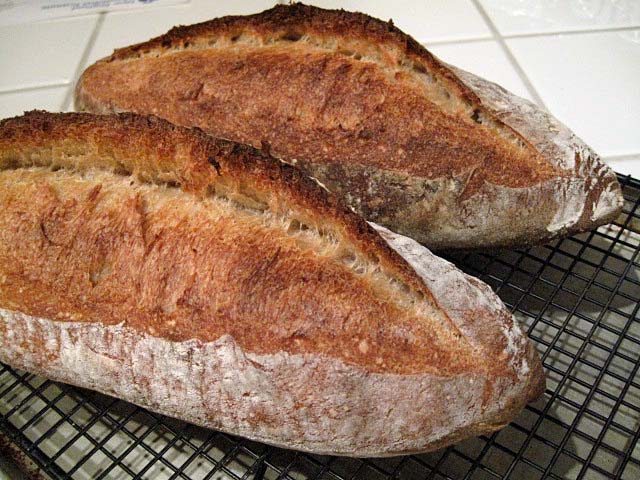
San Joaquin Sourdoughs, both shaped using Method 3.
Method 3
Pre-shape as a ball. Rest 20 minutes, seam side up, covered.
Place the piece on the board. De-gas.
Proceed as in Method 2, steps 3 through 7.
This method results in a loaf similar to that from using Method 2, except a bit thicker in the middle. It solves a problem I have had shaping bâtards with higher-hydration doughs with excessive extensibility. They tend to get too long and thin as I shape them, even before the final rolling out. Starting with a round piece of dough, rather than a log, helps me get the shape I want.
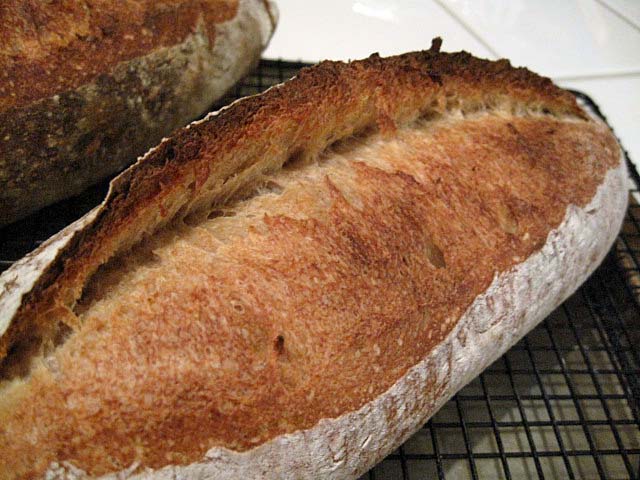
Thanks for listening.
Happy Baking!
David
- dmsnyder's Blog
- Log in or register to post comments
Great information, thanks!
No difficulty picking up those batards by the grigne! (One of Hammelman's criteria for the successful scoring of a baguette).
Just what I found, too, although I never articulated the thought that clearly.
Great post, David. You described the methods well and the pics give a good representation of the results. I favour the method used by Martin Philip in the King Arthur: Professional baking videos (Video no. 4, at the 6:30 mark).
Best,
Syd
The method in the KAF video is another I've used with good results. I'm sure you noted that Philip starts with a round pre-shaping for this method.
David
And a useful primer on batard shaping.
Thanks.
Glenn
Right now, I am satisfied with my batard shaping, but there will come a day when I won't be. (This is how it goes.) And then I'll come back to this post. Your analytical approach to bread making is most helpful. Thanks for posting. -Varda
Those look quite nice.
At what angle do you need to cut in to get that nice single grigne all along the loaf? It looks like you've cut straight down almost but I can't tell.
The angle of the blade should be 30 to 45 degrees from horizontal. The cuts should be 1/4 to 1/2 inch deep. The slacker the dough, the shallower the cut.
If you haven't read Bread Scoring Tutorial (updated 1/2/2009), you may find it helpful.
David
David, I look forward to your posts - always very instructive.
Thanks, from breadsong
David, I came back to this post after seeing the pictures of bread that my daughter sent me from Cambodia because the bâtards had a really cool shape and I thought this post would tell me how to get it. I see it doesn't. But I know you have shaped loaves like this yourself in your most recent post among others. Any chance you could give me some tips on how to achieve this? Thanks! -Varda